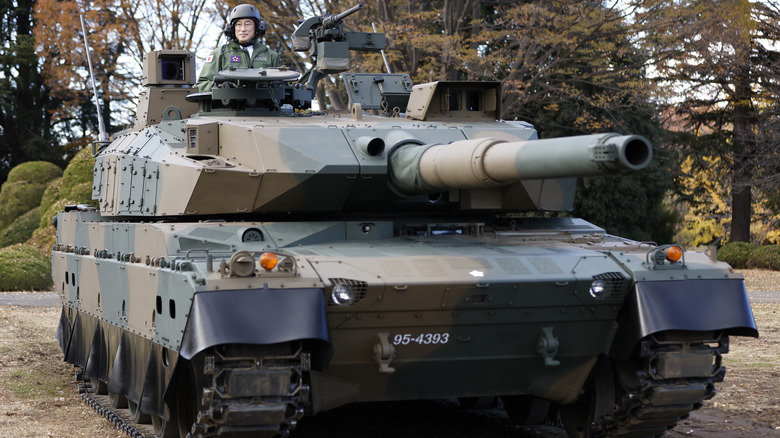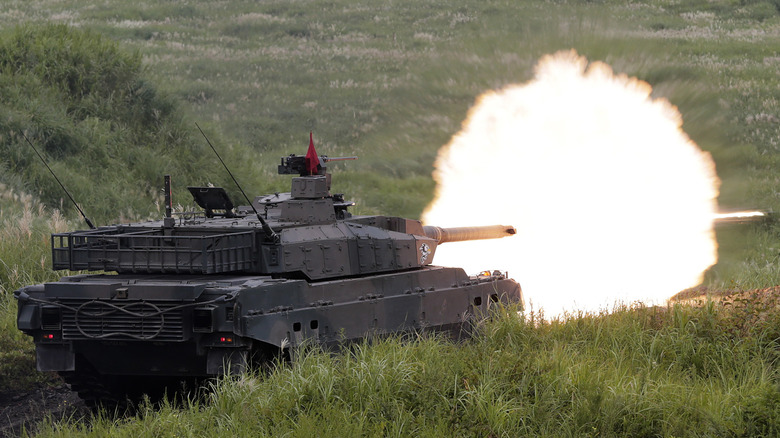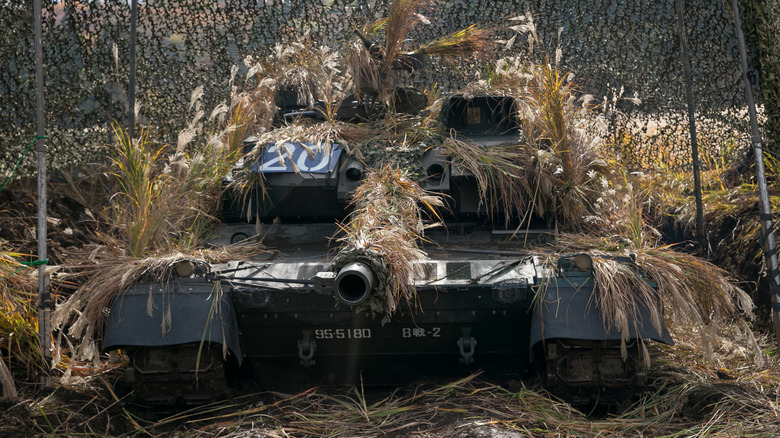Mitsubishi's War Machine: The Type 10 Tank
It's been nearly 80 years since tanks took over the various battlegrounds of World War II and, needless to say, a lot has changed since then. Even the tanks in World War II evolved a lot over the course of the war, with machines that rose to the top of their ranks at the time — both as part of the Allies and as part of the Axis powers.
Today, they have evolved much further in terms of speed, design, reliability, technology, and destructive power. One of today's tanks that first emerged in 2012 was a long time in the making, and is Mitsubishi's Type 10. As the main battle tank in Japan's arsenal, the Type 10 is designed for the country it defends.
With wildly varying terrain across the island nation, Japan needed a tank that could handle anything the island threw at it, and provide the firepower needed to defend its borders. That's why it's a medium tank compared with some of the larger tanks around the world, but it still packs a huge punch while remaining nimble and quick. These are some of the specs and systems that make Japan's Type 10 tank a force to be reckoned with.
Modular and laser defense
The Type 10 comes in at 44 tons as a lighter option for shipping around the country, and 48 tons when it's battle ready. This allows the lean tank (comparatively lightweight, relative to the heavier tanks around the world) the capability of driving over Japan's bridges, and it can be transported via train or by sea to different locations.
While it offers somewhat lighter armor than other tanks, it's made from modular ceramic composite armor, designed with a sloping front to make enemy tanks' shots miss or ricochet away from the hull. To beef up the somewhat light armor, the Type 10 also has add-on armor packages to complement its steel hull, which can be taken off during transport.
Defensive laser-driven tech can detect when enemy armaments target the Type 10 automatically deploying smoke to obstruct enemy shots. It also features what's known as a "digital battlefield management system," which connects with other tanks as well as infantry systems for better strategic management of everyone and everything on the battlefield.
The Japanese military currently has just 111 Type 10 tanks available, but has recently ordered another 10, bringing the deployable inventory to 121.
Fast with firepower
As a medium tank, the Type 10 is both agile and quick, with driving speeds of approximately 45 mph. It's outfitted with a V-8 diesel engine that puts out 1,200 horsepower, and it has a continuously variable transmission (CVT) gearbox that enables it to travel at top speed in both forward and reverse.
This enables the tank to use a strategy of pulling up close enough to fire, then quickly back away from the front line so enemies can't lock in. It also sits on a hydropneumatic suspension, enabling the driver to lean in any direction, plus "stand up" and "sit down."
When it's time to fire, this tank is no joke. It offers up a 120mm gun made with steel from Japan Steel Works — rated higher-quality steel than most, making it extremely durable. It also has secondary armaments including a roof-mounted M2HB 12.7mm heavy machine gun, and an additional Type 74 7.62mm co-axial machine gun to handle infantry threats.
The Mitsubishi Type 10 is Japan's main battle tank, and with all its firepower and advanced technologies, this is a vehicle that will probably stick around for a long time.


